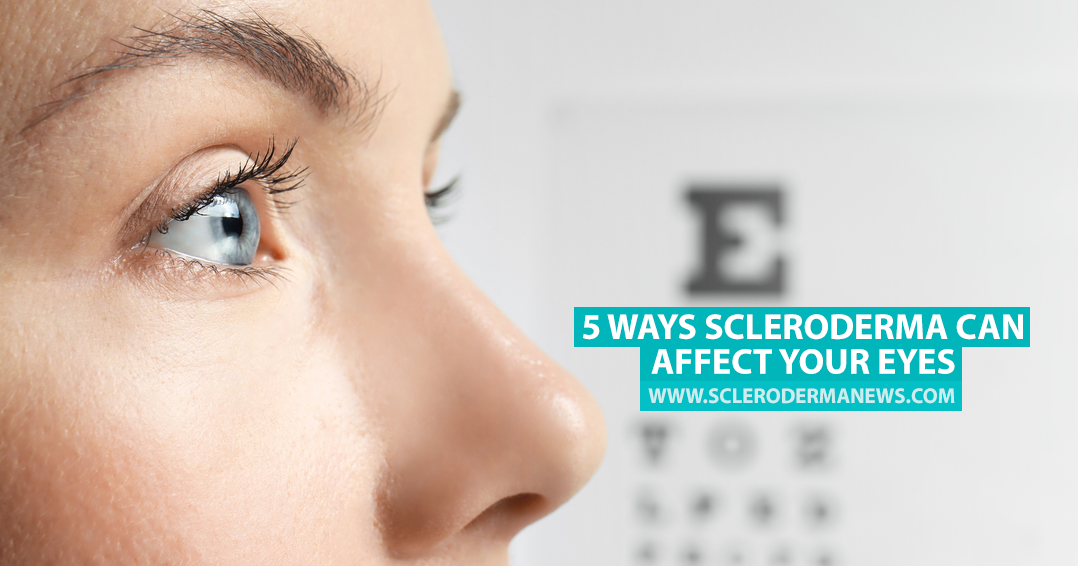5 Ways Scleroderma Can Affect Your Eyes
Written by |

Because scleroderma is an autoimmune disease that affects connective tissue, symptoms and complications can appear in any part of the body, including the eyes. We’ve put together a list of some of the most common eye complications experienced by people living with scleroderma, with help from the Arthritis Foundation and sclero.org.
MORE: Six complications of scleroderma that need treatment
Dry Eye Syndrome
Dry eye syndrome or keratitis sicca is where the eyes are unable to maintain a healthy film of tears, which is essential for keeping the eyes lubricated and protecting them from dust. The eyes become very dry and sore and vision may be affected, typically becoming blurred. Without the film of tears, the retinas can become damaged and the eyes are more prone to infection.
The condition can be caused by scleroderma itself or some of the medications used to treat the symptoms of the disease. Changing medications or using false tears (eye drops) can help relieve the problem.
Retinal Vascular Occlusion
Retinal vascular occlusion is where the small blood vessels surrounding the retina become blocked. These thin arteries can become backed up just like the larger blood vessels in the body. Vision problems occur and patients experience a sensation of a curtain coming down over the eye — which can come and go or happen suddenly.
Damage can be permanent but sometimes the veins can be treated with laser eye surgery to relieve the surrounding inflammation and allow better blood flow.
MORE: The effects of living with scleroderma
Autoimmune Uveitis and Iritis
Uveitis is an inflammation of the layer of the eye between the retina and white of the eye (sclera). The most common form of uveitis is iritis, also known as inflammation of the iris.
According to the Mayo Clinic, symptoms include eye pain, redness, blurred vision, seeing dark floating spots, decreased vision and light sensitivity. Anti-inflammatory or immunosuppressive medications may be prescribed to treat the condition.
Glaucoma
Glaucoma is the term for eye diseases where the optic nerve becomes damaged due to high pressure inside the eye. Often without any symptoms, glaucoma gradually decreases vision and may be brought on by high blood pressure or reduced blood flow to the optic nerve.
Regular eye exams are crucial to spot glaucoma early, as it can lead to blindness if left untreated. Eye drops are usually prescribed to increase the outflow or production of fluid in the eye, laser eye surgery is also an option according to the Mayo Clinic.
MORE: Five ways you can help raise awareness of scleroderma
Scleroderma News is strictly a news and information website about the disease. It does not provide medical advice, diagnosis or treatment. This content is not intended to be a substitute for professional medical advice, diagnosis, or treatment. Always seek the advice of your physician or other qualified health provider with any questions you may have regarding a medical condition. Never disregard professional medical advice or delay in seeking it because of something you have read on this website.





